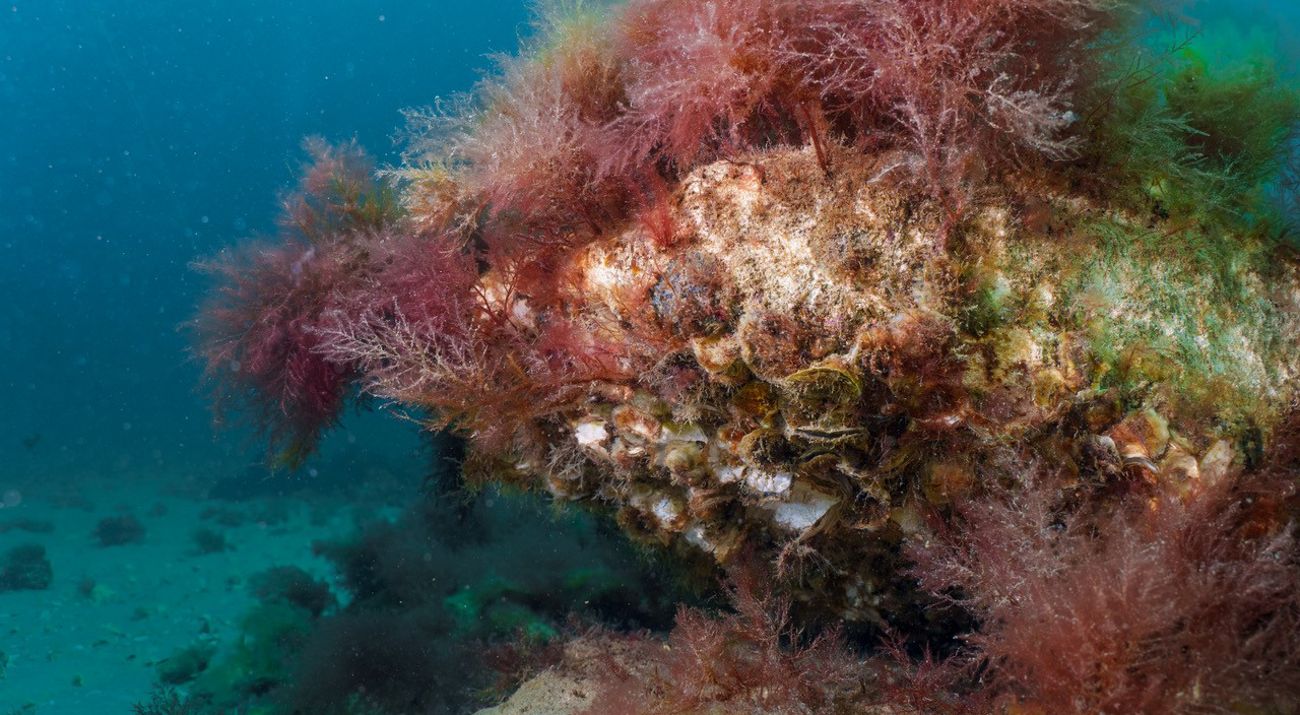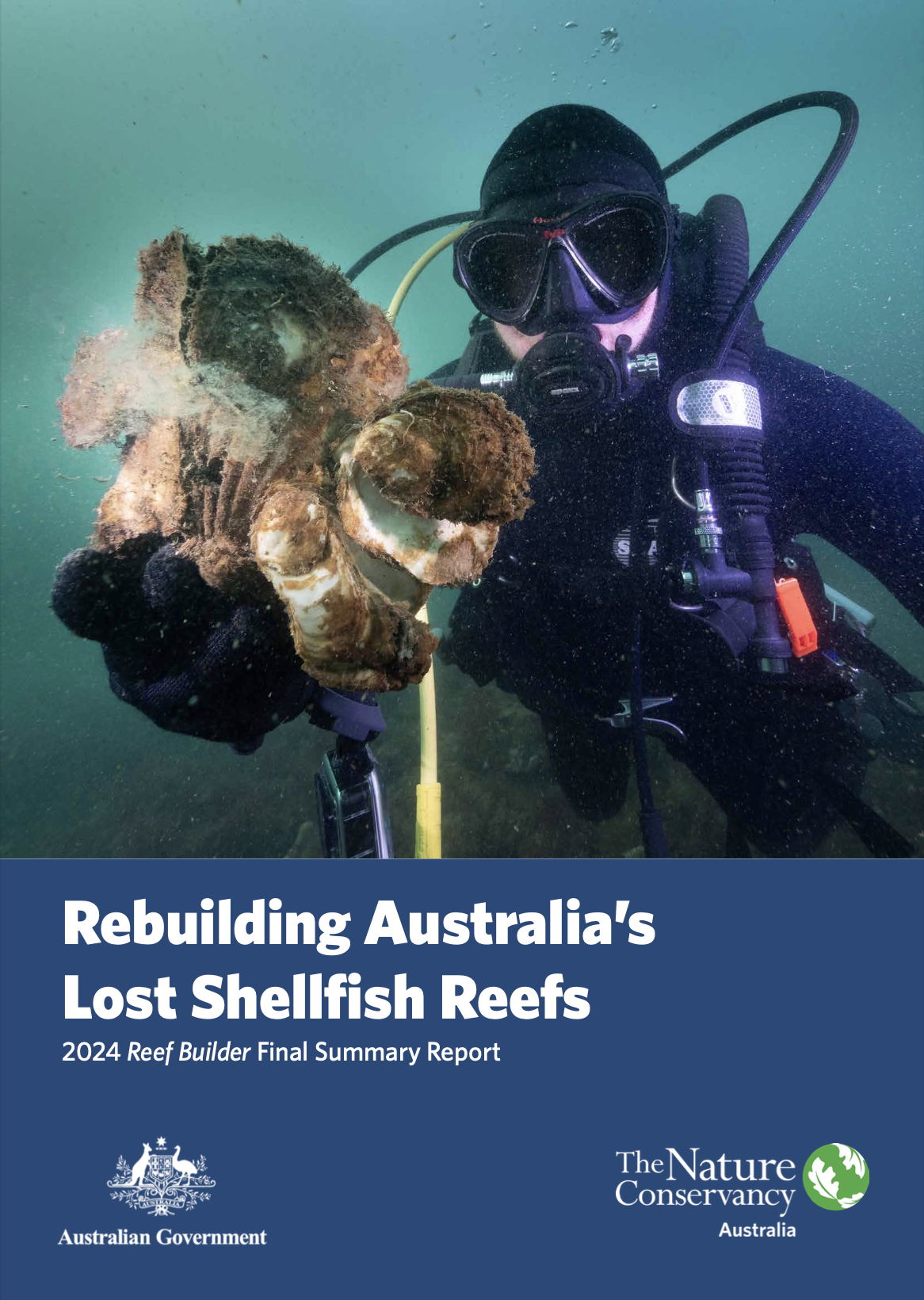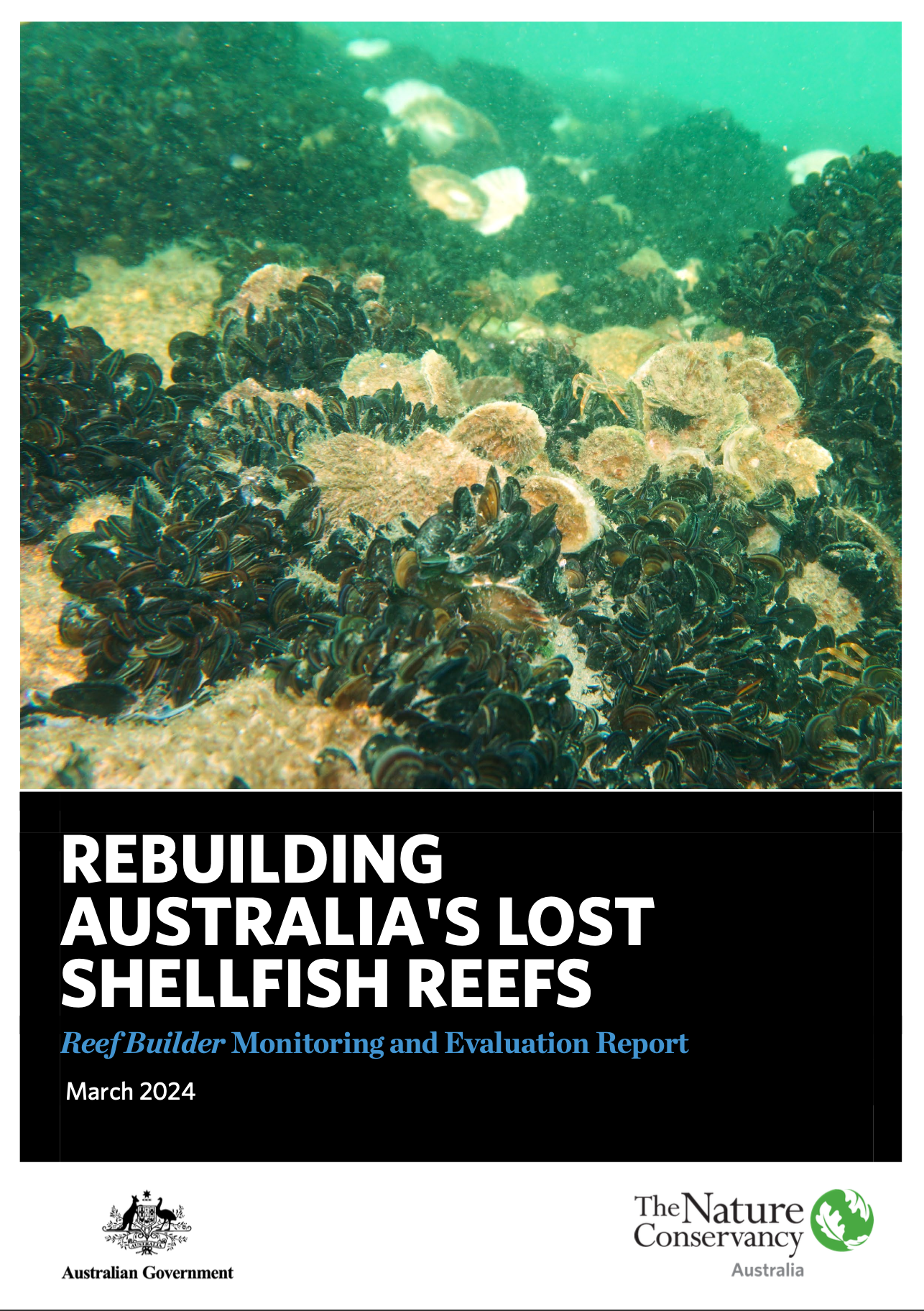Reef Builder was a partnership between The Nature Conservancy (TNC) and the Australian Government and has supported Australia’s largest marine restoration initiative to date. This $20 million Program sought not only to restore near-extinct shellfish reefs at 13 project geographies across southern Australia, but also to provide much needed economic stimulus to regional and metropolitan economies impacted by the COVID-19 pandemic, and those devastated by the 2019 bushfires.
Delivered between 2021 and 2023 in collaboration with government, natural resource management organisations, industry, First Nations groups, community groups, recreational fishers and universities, Reef Builder has restored over 40 hectares of lost shellfish reefs across 13 projects spanning Western Australia, South Australia, Victoria, Tasmania, New South Wales and Queensland.
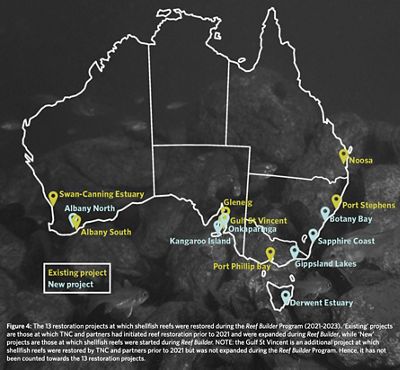
Shellfish reef restoration at a national scale
Reef Builder has demonstrated that the restoration of shellfish reefs at a national scale is possible, and that the flow-on benefits to people and nature are significant
These reefs have been seeded with 30 million native oysters and mussels to initiate the restoration process and their ecological development monitored post-construction.
Watch the Reef Builder story:
This restoration work generated 425 new employment opportunities for local communities, which was 2.5 times greater than the anticipated employment target. These jobs were primarily within small-to-medium enterprises, a vital driver of our economy, and the majority of people employed worked locally.
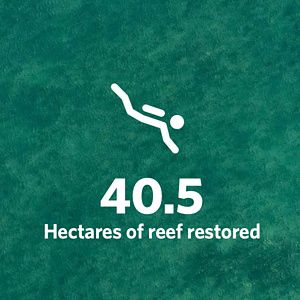
Reef Builder: 40.5 hectares of reef restored © The Nature Conservancy Australia
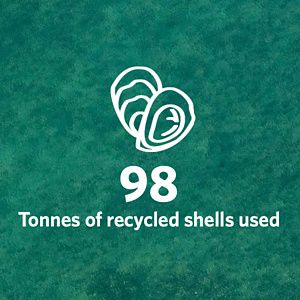
Reef Builder: 98 tonnes of recycled shells used © The Nature Conservancy Australia
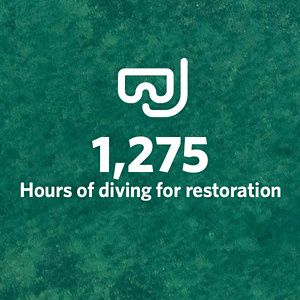
Reef Builder: 1,275 hours of diving for restoration © The Nature Conservancy Australia
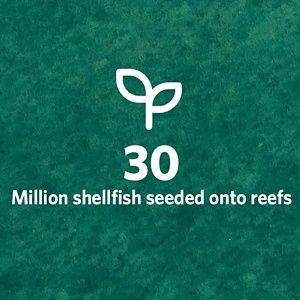
Reef Builder: 30 million shellfish seeded onto reefs © The Nature Conservancy Australia

Reef Builder: 51 small to medium enterprises engaged © The Nature Conservancy Australia
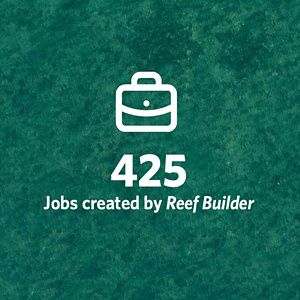
Reef Builder: 425 jobs created by Reef Builder © The Nature Conservancy Australia
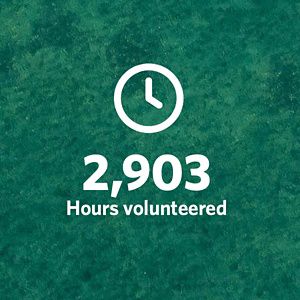
Reef Builder: 2,903 hours volunteered © The Nature Conservancy Australia
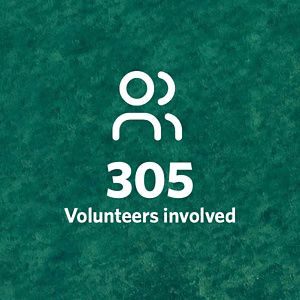
Reef Builder: 305 Volunteers involved © The Nature Conservancy Australia
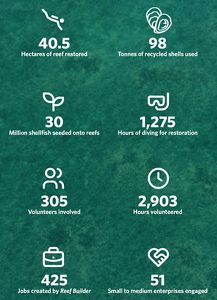
Reef Builder: Program infographic © The Nature Conservancy Australia
Engaging community also underpinned the success of the Program, with 185 stakeholder and community events, involving participation from over 5,200 community members. This included over 300 volunteers, who contributed 2,900 hours to the on-ground delivery of the Reef Builder outcomes, such as through TNC’s Shuck Don’t Chuck shell recycling initiatives, shellfish gardening, and water quality and fish monitoring.
Read more about each of the Reef Builder projects:
QLD
NSW
VIC
TAS
SA
WA
